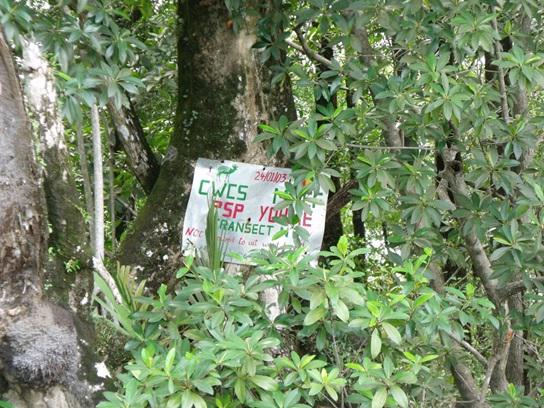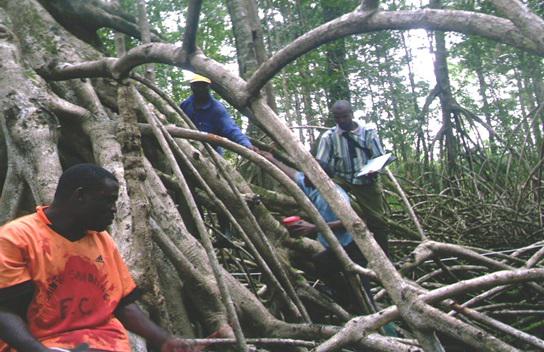Gordon Ajonina
The project will aim to quantify carbon stocks and sequestration in mangrove forest stands subjected to different wood exploitation pressures with technical document useful for climate change projects.

The Project will last at least 12 months (field work: 6-8 months; Desk work (planning, data entry, data processing and technical document production (4-6 months). It aims at quantifying carbon stocks and sequestration in mangrove forest stands subjected to different wood exploitation pressures (undisturbed to degraded) by re-measuring and analysing basic tree data from fifteen 2-8 years 0.1ha permanent sample plots established by Cameroon Wildlife Conservation Society (CWCS) in partnership with Cameroon Mangrove Network (CMN) and WWF along Cameroon coasts complemented by mangrove biomass partitioning equations (below ground, stilt, trunk, branches and leaves) tested in the region by the author (Ajonina, 2008).

The project originates from a community based mangrove management project started in 1997 within Douala-Edea Atlantic coastal region of Cameroon by CWCS that established eleven 0.1ha permanent sample plots (PSP) between June 2002 - March 2003 in four mangroves forest sites of various wood exploitation pressures (undisturbed to degraded) to monitor mangrove biomass and regeneration dynamics in other to set sustainable wood exploitation limits for mangrove forests heavily logged for fish smoking activities by women. The joint implementation of Mangrove and climate change project in 2007 with WWF Cameroon extended the number of PSP to 15 by establishing additional 4 PSP in 4 two sites.
This project will help achieve the re-measurement of the 15 PSP by completing re-measurement of 6 PSP in four sites which could not be covered under the CWCS-WWF project. The overall data from the 15 PSP will then be analysed to produce a technical document from the results sharable in various forums including: climate change workshops, seminars or scientific journals to provide knowledge to improve mangrove management practices under different human wood extraction pressures.
Also especially addressing climate change issues relating to mangrove forest productivity and carbon sequestration capacities by facilitating calculation of carbon credits needed for the implementation of emerging community based REDD, CDM and other PES schemes. It can also contribute to verifying recent hypothesis of comparative high mangrove biomass productivity compared with adjacent inland forest. Mangrove forests are also an important link between green (plant) and blue (sea) carbon which this project may provide an important insight.